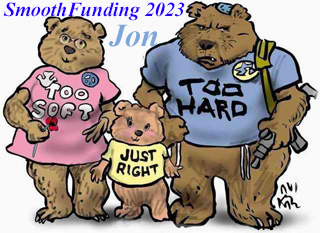|
The true liabilities for DB trustees are a series of net cash flows, typically over future decades. Even if the expression is now, regrettably, common parlance, the discounted capital value under any set of actuarial assumptions of those net cash flows is not a liability. However, for simplicity, I have used the misconception to define the opening assets. Over at DiscRate, I am advocating that the discount process should be abandoned for long-term financial assessments. Here, I am only using the discount process because it is universally mandated and I want to show that it doesn’t work.
The model can be summarised as follows:
* for each combination (see below), the model is run over 15 years 1,000 times using random numbers;
* the random numbers are explained at DiscRate but have been updated to include 2023;
* as explained at DiscRate, the random numbers are assessed for 4 different periods, namely “whole”, “early”, “later” and “blend”;
* one set shows the results for all 4 periods for 3 asset types (equities, conventional gilts and a 50:50 combo) while a second set shows the results for blend alone for 6 asset types (equities, conventional gilts, index-linked gilts and 3 50:50 combos);
* there are two funding approaches, mark to market (“MtM”) and smoothing (“Off”);
* the funding approach dictates how much cash is needed at any time (it is never released);
* all payments (in or out) are marked to market;
* the discount rate is volatile over time for both "MtM" and “Off”;
* pensions are either fixed or fully inflation-proofed (RPI);
* the outputs are solvency (MtM or Off), funds and ruin probability;
* for solvency and funds, the published outputs are the means, standard deviations, “highest 5.0%” and “lowest 5.0%” within 1,000 values (just 1 probability for ruin);
* the results are shown as interactive HTML5 charts.
|



